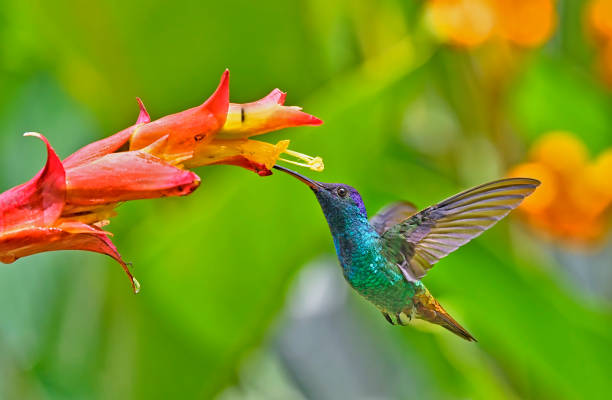Hummingbirds: Nature's Vibrant Aerial Acrobats
Hummingbirds, with their iridescent feathers and rapid-wing movements, are a marvel of the natural world. The tiny avian wonders are known for their extraordinary flight skills and tireless energy. However, there's much more to these tiny birds than their enchanting appearance and stunning aerial acrobatics. Let's delve into the fascinating world of hummingbirds, exploring their unique features, behaviors, and the crucial role they play in our ecosystems.

A Closer Look at Hummingbirds: Unraveling the Mystery
Hummingbirds belong to the Trochilidae family, with over 330 species spread across the Americas. The smallest bird species on Earth, the Bee hummingbird, is part of this family. Despite their minuscule size, hummingbirds are known for their dazzling plumage, ranging from vibrant reds and electric blues to gleaming greens.
Their name derives from the humming sound created by their rapid wing-flapping, which can reach an astounding 80 beats per second. They are the only birds capable of hovering in mid-air and flying backward, a feat achieved by their unique wing structure and high energy metabolism.
Recent Discoveries: New Insights into Hummingbird Behavior
Recent research has shed light on hummingbird’s impressive cognitive abilities. A 2020 study revealed that these birds have a remarkable memory, allowing them to remember every flower they’ve visited and the exact time of nectar replenishment.
Moreover, hummingbirds have been found to perceive colors that are invisible to the human eye. Their advanced color vision allows them to detect a wide spectrum of colors, including ultraviolet, which helps them in foraging and mate selection.
The Hummingbird Market: From Feeders to Field Guides
The popularity of hummingbirds has led to a range of products catering to bird enthusiasts. Hummingbird feeders, for instance, are available in a variety of designs and price ranges, starting from $10 to $100. Field guides and books about hummingbirds are also popular, with price tags ranging from $15 to $30.
These products not only cater to birdwatchers and nature enthusiasts but also contribute to hummingbird conservation efforts. Many manufacturers pledge a portion of their profits to conservation initiatives, raising awareness about the threats faced by these birds.
The Importance of Hummingbirds: Pollinators and Ecosystem Protectors
Hummingbirds play a crucial role in ecosystems by acting as pollinators. Their long, slender beaks are perfectly adapted for sipping nectar from deep within flowers. As they move from flower to flower, they inadvertently carry pollen on their beaks and feathers, aiding in plant reproduction.
The decline in hummingbird populations due to habitat loss and climate change could have severe implications for the biodiversity of our ecosystems. Therefore, protecting these tiny powerhouses is essential for maintaining our planet’s ecological balance.
In conclusion, hummingbirds, with their vibrant colors and extraordinary abilities, are a testament to nature’s ingenuity. By delving into their fascinating world, we not only gain a deeper appreciation for these avian wonders but also understand the importance of their conservation for our planet’s health.





